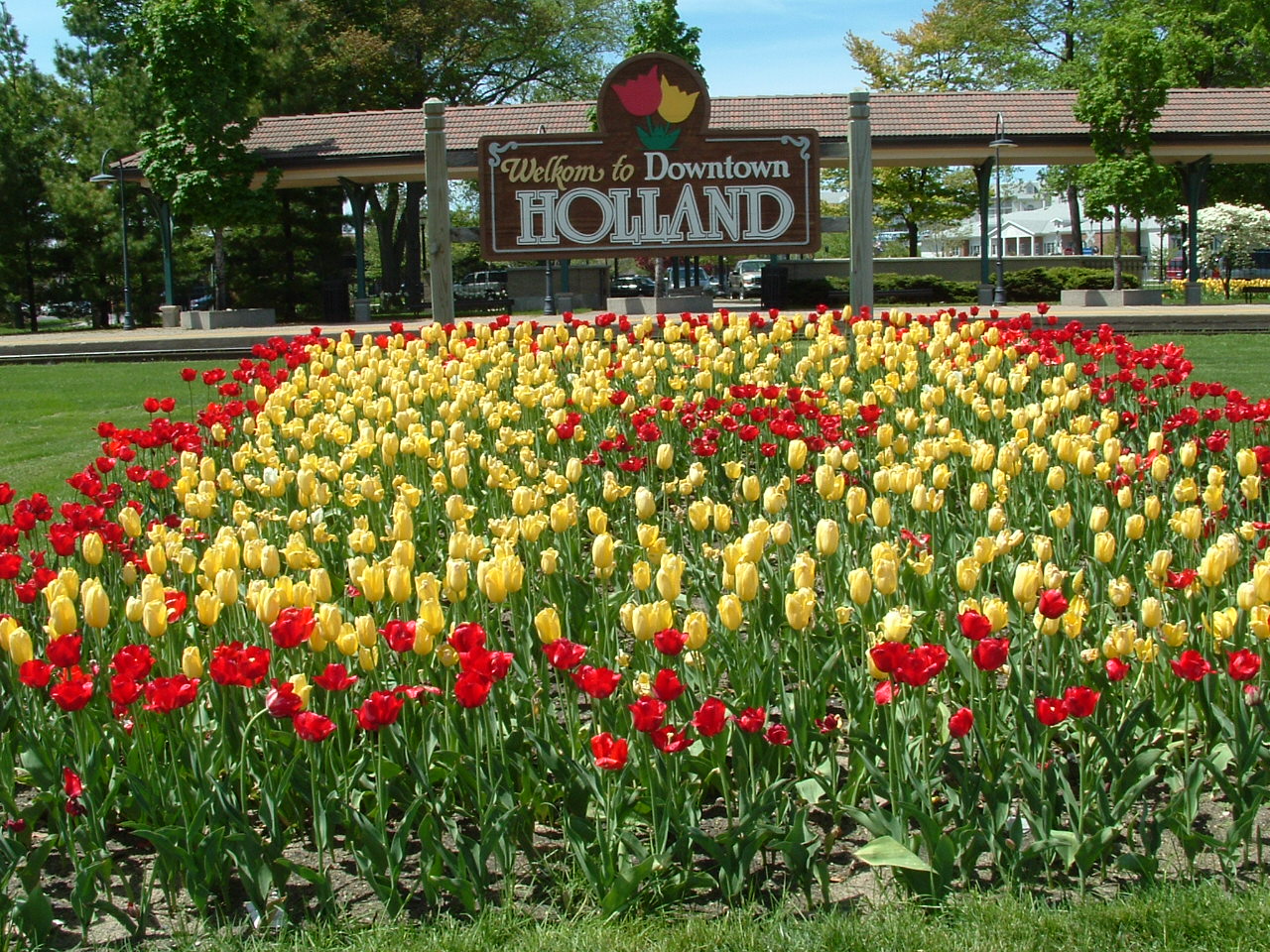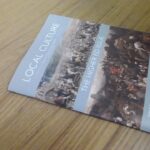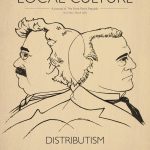Imagine you have traveled across the ocean to the other side of the world when you suddenly encounter a theme park modeled after the local neighborhood you grew up in. There, you find people dressed up in your grandparents’ clothes, engaging in your cultural activities and celebrations, and practicing your local crafts. But it gets even more incredible. Entire streets, churches, houses, and barns are built especially to resemble the village you grew up in. In the distance, you hear the songs of your youth, as the smell of your favorite childhood food greets your nose. Would you pay sixteen dollars to enter?
Of course I did.
Growing up in the Netherlands, I knew that hidden in the greenery of our southernmost province was a small village called America. My family and friends often joked about going on a holiday there so we could boast about “a holiday to America.” But never in my wildest dreams would I have guessed that hidden in the greenery of Michigan was a city called Holland, and that in this city there was a theme park called Nelis’ Dutch Village.
After a tough week, as I was longing for a sense of home, I decided to pay it a visit. I think it was one of the strangest experiences of my life. When the sign for Holland appeared on the highway, it immediately brought a smile to my face. Though I was only about a mile away from the park, that sign was the only indication that Holland was near. But then, alongside the six-lane highway US-31, right beside Chick-fil-A and Burger King, a windmill suddenly appeared. At the entrance to the park, I was greeted by two American teenagers in klederdracht (traditional Dutch clothing) asking for my online ticket. They told me that I was just in time for the clog dance performance, and they gave me a program for that day, which included a cheese-making workshop, Dutch language lessons, clog manufacturing, a Delftware pottery workshop, and Dutch candy tasting.
I was undercover that whole day, never disclosing my identity as the costumed American teenagers taught me my language, explained to me my culture, and served me my food. I almost got caught when I ordered my favorite dish, kroketten. I made the mistake of saying the word with the Dutch pronunciation. The kind waitress looked at me confusedly. “Sorry,” she said, “what did you want? Oh, I see! It’s pronounced crock-kitten.” I couldn’t help but chuckle. “Thank you,” I said, “it’s a strange language.”
Nelis’ Dutch Village clearly was an Americanized version of Holland. Even the portraits of our royal family that graced the walls of the museum portrayed them as just a tad more attractive to the American eye than they actually are, with whiter teeth, stronger jawlines, and thinner faces. In the Netherlands, by contrast, our custom is to treat our royals with slight ridicule. I was told all about the manufacturing of Gouda cheese in a small rustic shop that smelled like roses. My parents first met in Gouda, where they attended the same school. My father worked as a cheese scrubber in a local cheese factory. He never spoke of roses. The one thing I remember about the cheese factory is that it stinks like hell.
I have the privilege of never having experienced exoticization before this. It was completely new for me, and it made me reflect on the ways in which I have engaged with cultures that are not my own. Ours is a great age of tourism and global mobility, and it has become easier than ever to explore different cultures and lands. But at the same time, with the rise of the tourist industry, it has become more difficult than ever for travelers to truly get to know the places they visit and the cultures of the peoples inhabiting them.
Last summer, while spending a month in the Netherlands, I visited the famous Dutch windmills at Kinderdijk for the first time in my life. Windmills are scattered all throughout the Dutch landscape, but at certain places, like Kinderdijk, they have been turned into a tourist attraction, catering to busloads of American and Asian tourists who are making a quick Dutch stop on their tour of Europe. In English, the dressed-up Dutch guides exoticized our culture and history just like the American teenagers in Nelis’ Dutch Village had, squeezing a complex and fluid society into a solid and more palatable stereotype. Tourists are taught that windmills, clogs, and cheese are essential parts of Dutch culture. But tourists don’t have the time to meet any actual millers (there aren’t many left) or other workers in contemporary water management. Tourists are told romantic stories about clogs, so they don’t learn that clogs are simply uncomfortable working-class safety shoes that prevented injuries and wet feet for those fishing, manufacturing, and farming on the Dutch clay and boglands in a time before rubber and steel-toe boots. Tourists love to visit Gouda and attend a cheese workshop but don’t get to meet the actual workers who produce the overpriced cheese they buy in the gift shop.
The increase in cultural diversity in many places has been paired with a process of cultural simplification and exoticization, which is further facilitated by globalization’s elimination of local cultural depth in favor of universalization and the industrial standard. We have come to engage with our cultures as digestible identity markers, rather than experiencing them as the ever-changing waters in which we swim, and swim differently depending on factors like our socioeconomic status, family relations, and physical characteristics. Especially for those of us living in colonial multicultural nations like the United States, Australia, and New Zealand, ethnicities are often simplified into lists of foods, garments, religious or national holidays, and languages, all of which can be easily combined in multicultural potluck dinners and represented by a couple of colors and shapes arranged to form a flag.
The Dutch flag, a pair of clogs, or even the most delicious Gouda cheese does not represent my culture in any meaningful way. If you want to know about my culture, you need to eat in my house, walk with me, work with me, laugh with me, cry with me, and pray with me. I felt a sense of home in Nelis’ Dutch Village because they did an amazing job at reconstructing the backdrop to my life in the Netherlands: the sound of the carillon and street organ, the feeling of walking on the cobblestones, the architecture, the canals, the food. But all those things are just a stage. Culture is the ever-evolving play that takes place on that stage, as new props come and old props are replaced, even as the theater remains the same. Of course, the play is influenced by the stage and interacts with it. But you cannot understand the play simply by looking at the stage.
Nelis’ Dutch Village, if anything, is a lesson in American culture. Its history can be traced back to Dutch settlers and their offspring, as can the history of all of Holland, Michigan. The theme park speaks of their homesickness, their economic struggles, and the evolving meaning of ‘ethnicity’ and ‘culture’ to those existing in diaspora and multicultural societies. It speaks of the slow emergence and evolution of white American cultures and ethnicities as distinct from European cultures and ethnicities. The Holland Museum in the city of Holland not only features an impressive collection of Dutch artworks but also displays a detailed history of the colonization and settlement of these lands and waters, which are the unceded territories of the Potawatomi, Odawa, Peoria, and other Great Lakes Anishinaabeg nations. It lays out the timeline of the city of Holland from a Dutch colonial farming settlement to the contemporary American city where I stayed in the Wooden Shoe Motel and where hundreds of thousands of tourists attend the Tulip Time Festival every year.
Similarly, America, that small village in the south of the Netherlands, tells a story of Dutch culture. At the same time when Dutch colonial settlers founded Holland in Michigan, other farmers instead explored lands closer to their family homes. With an increasingly exploitative attitude toward the land that in many ways mirrored the attitude of the settlers in Michigan, they drained previously untouched boglands in search of peat to support their ever-increasing need for fuel at the dawn of the Industrial Revolution. Many of the settlements in the newly drained, relatively remote boglands were named after the distant lands from the stories of those who had left, including the land called “America”. The peat workers and farmers recognized their own working-class bogland struggles in the glorified stories of the struggles of colonial settlers against “the wilderness.” As coal replaced peat and the Industrial Revolution gained full force, America’s economy collapsed. But the town survived and its crippling dependence on the peat industry was eventually overcome due to an essential element of Dutch culture: dry humor. The fact that many Dutch people like to joke about going on a holiday to ‘America’ without ever crossing the Dutch border has contributed to the emergence of various vacation parks for national tourism in the small town.
Both American Holland and Dutch America tell a tale of the exoticization of culture, but the two stories are not the same. They differ in accordance with the different cultural waters in which the towns exist and continue to evolve. Dutch America does not have gift shops with American flags and merchandise, American-themed diners, or Bald Eagle festivals, nor is there an ‘American Village’ theme park. In contrast, American Holland does not have vacation parks or American tourists joking about “a holiday to Holland.” Although they touch upon similar themes and at times even the stages resemble one another, the plays are undeniably different, pointing to a true cultural difference beyond the romantic symbolism of tulips and bald eagles.
Is it a difference in humor? A different relationship with the phenomenon of ‘culture’? A different approach to commercialization? After engaging with the Dutch and American cultural plays for many years, I am not sure that I can or even want to put the cultural differences in simple terms anymore. Rather than compare, simplify, and exoticize, why not simply admire the plays in all their complexity and beauty?
Image via Wikimedia Commons





1 comment
Art Kusserow
Your essay was timely and more appreciated because we just returned from a Viking (the cruise company) river cruise, one stop of which was for a tour of the Kinderdijk windmills. Viking guides are well-versed in history, and ours was quick to point out that the Netherlands, and especially Kinderdijk, were NOT fundamentally about “tulips, wooden shoes, and Gouda cheese!”, making much more subtle and complex points about the nature of life in the “windmill days.” They are very skilled at not reducing any subject, much less history in general, to stereotyped icons. One minor example: families were known to have double-digit numbers of children and, touring the inner workings and design of an actual windmill, one’s mind can hardly wrap around 10 to 15 people living in a windmill, not to mention the sophisticated understanding of geometry, wind currents, water tables, and innumerable other variables that go into creation of a windmill. Our guide also pointed out that the Dutch did not “invent” the concept of windmills, as I think might generally be accepted as fact by most Americans, but “stole” (she said with appreciative dry wit) from the Greeks. Daily life in those middle centuries had to have been incomprehensively difficult compared to the everyday luxuries of “modern” life we take for granted.
We did get to meet and talk briefly to a working miller and his very strong (female, much appreciated by our group for her opportunity) apprentice, so one can get a taste of real people rather than theme-park characters, with the right opportunities.
I wish you well on your continued studies!
Comments are closed.